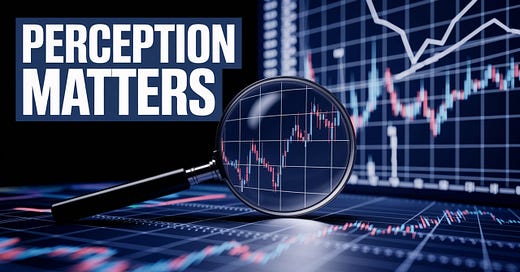The Psychology of Perception in Trading: Where Every Decision Begins
In the fast-paced world of financial markets, where decisions are made in milliseconds and fortunes rise and fall on momentary shifts, one constant drives every trade: perception.
Before the charts, before the analysis, before the execution, a trader must first recognize an opportunity. Without this recognition, there is no action. That is why, at the very heart of every trading decision, lies a deeply psychological process, the act of perceiving.
But what exactly is perception in the context of trading? And more importantly, how does it influence the quality of our decisions?
Understanding the Foundation: What Is Perception?
Perception, in its essence, is the lens through which we interpret information. It is not just about observing the market; it is about making meaning of what we see. Two traders can examine the same data and come up with entirely different conclusions. One might see a bullish breakout, and the other a false signal.
This divergence arises from the underlying mental and emotional frameworks that shape how we process information:
Cognitive Biases — Our brain’s shortcuts often distort reality.
Emotional State — Fear, greed, or overconfidence can cloud judgment.
Beliefs and Experience — Our past outcomes directly affect our expectations of the future.
Focus and Intent — What we choose to look for, we are more likely to see.
In trading, perception isn’t objective. It’s selective.
The Role of Mental Energy
Mental energy, or the capacity to focus, remain calm, and think clearly, plays a crucial role in shaping perception. A trader operating in a state of fatigue or emotional turmoil may miss subtle signals or misinterpret price action.
On the other hand, a mentally sharp trader, who has cultivated emotional discipline and cognitive clarity, will often perceive opportunities that others overlook. This is where trading becomes as much a mental game as it is a strategic one.
The Market as a Field of Forces
To take this concept further, imagine every asset, every price movement, and every candle on a chart as part of a dynamic system of forces. These forces generate constant streams of information, information about supply and demand, sentiment, institutional behavior, and retail psychology.
Our perception acts as the filter through which we interpret these forces. It determines not only what we see but also how we respond.
This is why trading is never just about the market. It is about us.
Perception Shapes Reality
In a world flooded with data, the trader’s edge lies not in having more information, but in having a better understanding of how they perceive it.
When we refine our perception by managing our emotional states, increasing our awareness of biases, and cultivating focus, we begin to see the markets not just as chaotic movements of price, but as structured, interpretable behavior.
And when perception improves, decision-making follows.
Conclusion: Master the Mind, Then the Market
Before every trade, before every strategy, and before every execution — pause.
Ask yourself:
What am I seeing? And why do I see it this way?
Because the moment we gain clarity about our perception, we elevate ourselves from reactive participants to intentional strategists. We stop chasing the market and begin understanding it.
And that, perhaps, is where true trading mastery begins.




